NPS In Retail Industry: Benefits, Implementation and Best Practices
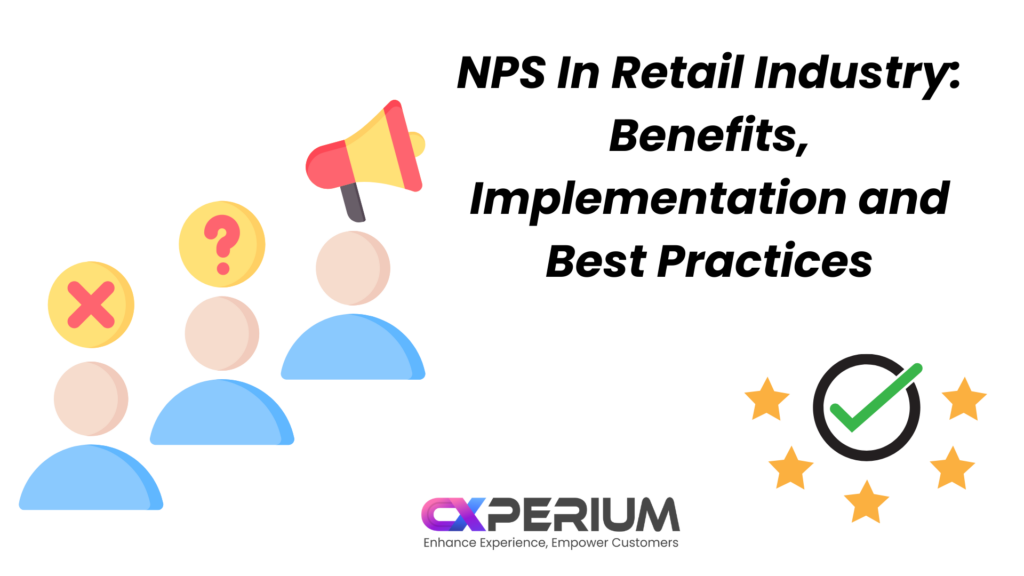
The retail industry is highly competitive, with numerous players vying for customers’ attention and loyalty. With the rise of e-commerce and changing consumer preferences, retailers are facing more pressure than ever to differentiate themselves and provide exceptional customer experiences. One way that retailers can measure and improve customer satisfaction and loyalty is through the use of Net Promoter Score (NPS).
NPS is a customer satisfaction metric that measures the likelihood of a customer recommending a company’s products or services to others. It is based on a simple question: “On a scale of 0 to 10, how likely are you to recommend this company to a friend or colleague?” Customers who respond with a 9 or 10 are considered “promoters,” while those who respond with a 6 or below are considered “detractors.” The NPS is calculated by subtracting the percentage of detractors from the percentage of promoters, resulting in a score between -100 and 100.
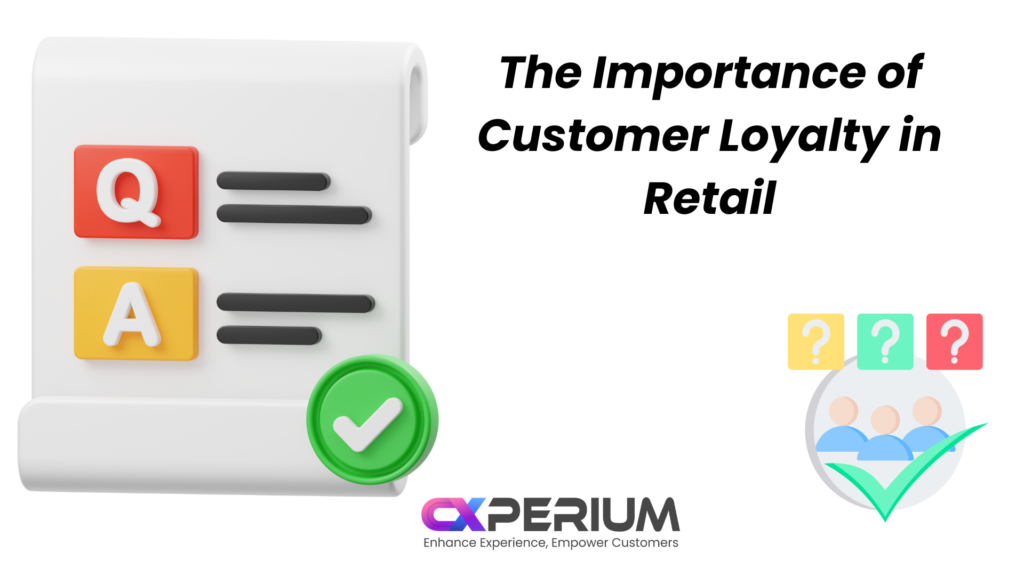
The Importance of Customer Loyalty in Retail
Customer loyalty is critical in the retail industry. Satisfied customers are more likely to return to a store, purchase more frequently, and recommend the store to others. In contrast, dissatisfied customers can harm a retailer’s reputation and lead to lost sales. NPS provides a way for retailers to measure customer loyalty and identify areas for improvement, which is crucial for success in this industry.
Overview of NPS as a Metric
NPS has become a popular metric in many industries, including retail, due to its simplicity and effectiveness. NPS provides a clear picture of customer sentiment and allows retailers to track changes in customer loyalty over time. Additionally, because NPS is a standardized metric, it can be used to benchmark performance against competitors and industry standards.
In the following sections, we will explore the benefits of NPS in retail, how to implement NPS effectively, case studies of retailers using NPS, challenges and limitations of NPS in retail, best practices for using NPS, and the future of NPS in retail. By the end of this article, you will have a deeper understanding of how NPS can help retailers improve customer satisfaction and loyalty, and stay competitive in a rapidly changing industry.

Benefits of NPS in Retail Industry
Net Promoter Score (NPS) is a valuable metric for retailers looking to improve customer satisfaction and loyalty. Here are some of the key benefits of using NPS in the retail industry:
Measuring customer satisfaction and loyalty
NPS provides a simple and effective way to measure how satisfied and loyal customers are. By asking customers to rate their likelihood of recommending a store to a friend, retailers can get a clear picture of how well they are meeting customers’ needs and expectations. This information can be used to identify areas for improvement and make data-driven decisions.
Identifying areas for improvement
NPS can help retailers pinpoint specific areas of their business that are not meeting customer expectations. For example, if the NPS survey shows that customers are dissatisfied with the checkout process, the retailer can focus on improving this area to increase customer satisfaction and loyalty. By addressing these pain points, retailers can improve the overall customer experience and drive repeat business
Benchmarking against competitors
NPS is a standardized metric that can be used to benchmark performance against competitors and industry standards. This allows retailers to see how they stack up against the competition and identify areas where they can improve. By tracking NPS over time and comparing it to industry averages, retailers can stay competitive. Also they can ensure they are providing the best possible customer experience.
Driving customer loyalty and advocacy
NPS is a powerful tool for driving customer loyalty and advocacy. Customers who are promoters are more likely to recommend the store to others, which can lead to new business and increased revenue. Additionally, loyal customers are more likely to make repeat purchases, increasing customer lifetime value.
Increasing revenue
By improving customer satisfaction and loyalty, retailers can increase revenue. Satisfied customers are more likely to make repeat purchases, spend more money, and recommend the store to others. Additionally, NPS can help retailers identify opportunities for upselling and cross-selling, further increasing revenue.
Overall, NPS is a valuable metric for retailers looking to improve customer satisfaction, loyalty, and revenue. By measuring customer sentiment, identifying areas for improvement, and benchmarking performance against competitors, retailers can stay competitive and provide the best possible customer experience.
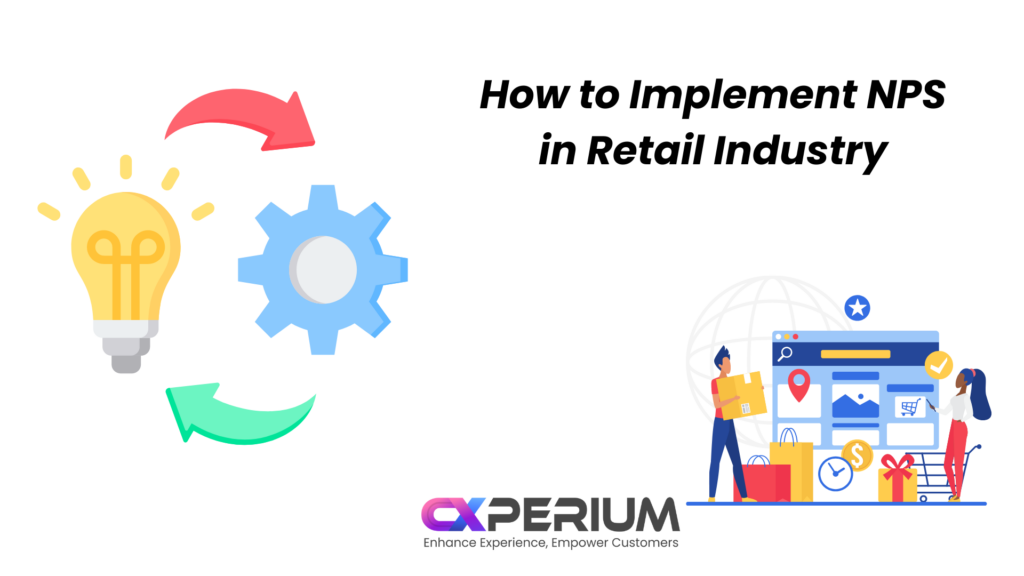
How to Implement NPS in Retail Industry
Implementing NPS in retail can be a straightforward process if done correctly. Here are some steps that retailers can take to implement NPS effectively:
Define the scope and goals of the survey
Before launching an NPS survey, retailers should define the scope and goals of the survey. This includes deciding which stores, products, or services will be surveyed, who will be surveyed (e.g., all customers, specific segments), and what the goals of the survey are (e.g., improve customer satisfaction, increase revenue).
Choose the right NPS survey method
Retailers can collect NPS data through a variety of methods, including email surveys, in-store surveys, online surveys, and phone surveys. Each method has its advantages and disadvantages. So retailers should choose the method that works best for their business and customers.
Keep the survey short and simple
NPS surveys should be short and simple to increase response rates and minimize survey fatigue. The survey should include the NPS question and a few follow-up questions to gather more information, but should not be too lengthy or complicated.
Act on the results
Collecting NPS data is only valuable if retailers act on the results. Retailers should analyze the data, identify areas for improvement, and develop action plans to address customer pain points. It’s important to communicate the results and action plans to employees and stakeholders, and track progress over time.
Integrate NPS into the business culture
To truly benefit from NPS, retailers should integrate it into their business culture. This means incorporating NPS data into decision-making processes, training employees on the importance of customer satisfaction and loyalty, and celebrating successes and improvements.
Monitor and track NPS over time
NPS is not a one-time event, but rather an ongoing process. Retailers should track NPS over time to see how it changes and identify trends. Additionally, tracking NPS against industry benchmarks and competitors can provide valuable insights into the business’s performance
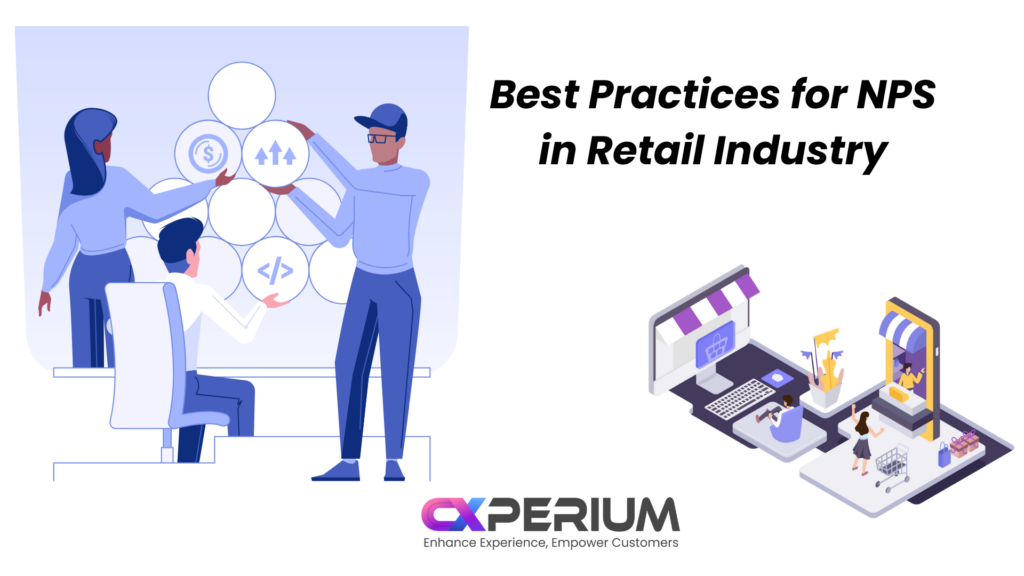
Best Practices for NPS in Retail Industry
While implementing NPS in retail is relatively simple, there are some best practices that retailers can follow to maximize the impact of their NPS efforts. Here are some best practices for NPS in retail:
Make NPS a company-wide initiative
NPS should not be limited to just one department or team. It should be a company-wide initiative that involves everyone from the CEO to front-line employees. This ensures that everyone is aligned around the importance of customer satisfaction and loyalty.
Act on feedback quickly
When customers provide feedback through the NPS survey, it’s important to act on it quickly. This means identifying and addressing customer pain points, recognizing and rewarding positive feedback, and following up with customers who have had a negative experience.
Use NPS to drive continuous improvement
NPS is not just a one-time survey, but an ongoing process of improvement. Retailers should use NPS data to identify trends and opportunities for improvement, and develop action plans to address them.
Train employees on NPS
Employees are on the front lines of customer interactions, so it’s important to train them on the importance of NPS and how to deliver excellent customer service. This includes providing them with the skills and tools they need to address customer concerns and provide a positive customer experience.
Celebrate successes and improvements
When the business sees improvements in NPS scores, it’s important to celebrate and recognize the employees and teams responsible for the improvements. This helps build momentum and reinforces the importance of NPS to the organization.
Monitor and track NPS against benchmarks
To fully understand the impact of NPS efforts, it’s important to monitor and track NPS against industry benchmarks and competitors. This provides valuable insights into the business’s performance and helps identify areas for improvement.
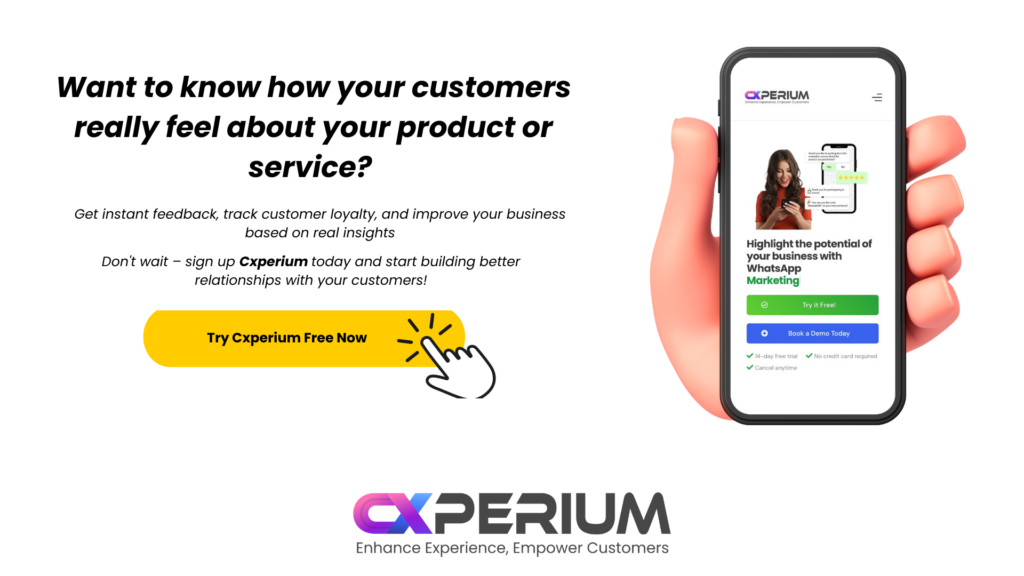
The Ultimate Survey Tool for Retailers
Cxperium is a web app that allows you to create surveys and polls right within your favorite messaging apps, including WhatsApp. With Cxperium, you can easily create NPS surveys to measure customer loyalty and satisfaction, along with many other types of surveys to gather valuable insights.
Cxperium has an useful design to be easy to use and accessible for retailers of all sizes. It doesn’t matter if you’re a small business owner or a large retail chain. Cxperium can help you gather the insights you need to improve your business and keep customers coming back.
So why wait? Sign up for Cxperium today and start gathering valuable insights that can help you grow your retail business!